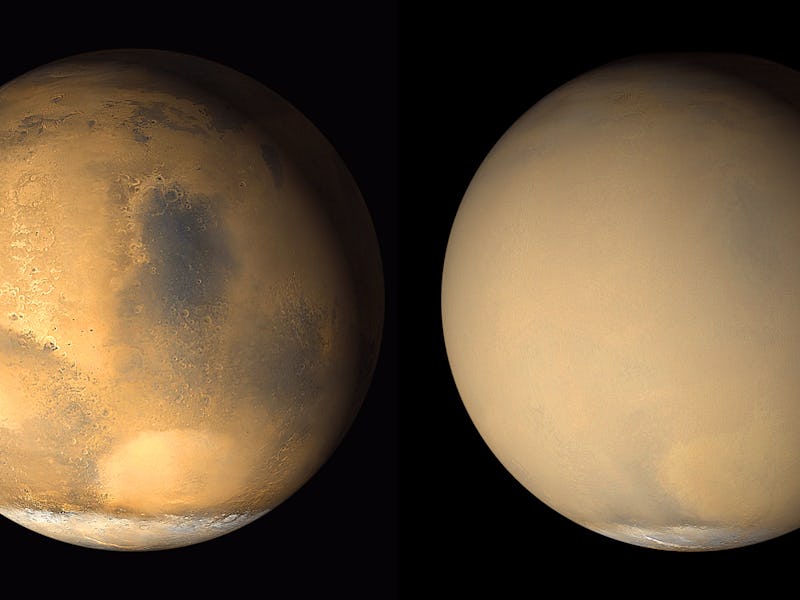
As the very best litter box in the solar system, Mars is a landscape of infinite mysteries — the most obvious being how it went from being warm and wet to dry and chilly over the course of its history.
In the past, research has suggested this transition could be explained by the thinning of Mars’s atmosphere, which is roughly 100 times thinner than Earth’s. A new study published Monday in Nature Astronomy expands on this idea by exploring the relationship between Mars’s dust storms and some rogue atmospheric gases.
Using information from NASA’s Mars Reconnaissance Orbiter (MRO), researchers analyzed the red planet’s most recent global dust storm, which occurred in 2007. The team posits these all-encompassing events might be linked to rising water vapor in the middle of Mars’s atmosphere, which in turn causes hydrogen in the top of the planet’s atmosphere to escape.
“We found there’s an increase in water vapor in the middle atmosphere in connection with dust storms,” the study’s lead author Nicholas Heavens of Hampton University says in a statement. “Water vapor is carried up with the same air mass rising with the dust.”
These images -- taken a month apart from each other in 2001 -- show how vastly different Mars looks when it's enveloped in a global dust storm. (Image: NASA/JPL/MSSS)
In order to better understand the connection between global dust storms, water vapor, and hydrogen, some scientists are rooting for another tempest. According to NASA, Martian dust storm season begins this summer and extends into 2019, though it’s unclear how big the events will actually be.
“It would be great to have a global dust storm we could observe with all the assets now at Mars, and that could happen this year,” co-author David Kass of NASA’s Jet Propulsion Laboratory (JPL) says in a statement.
While another global dust storm would be great for scientists studying it, it’d be less than ideal for some non-human entities scoping out Mars. NASA’s Opportunity rover is solar-powered, so it’d have to “hunker down to save energy,” the space agency says.
Global dust apocalpyse or not, you’ve gotta give Mars a little bit of credit: it really knows how to stick to its extremely hellish brand.